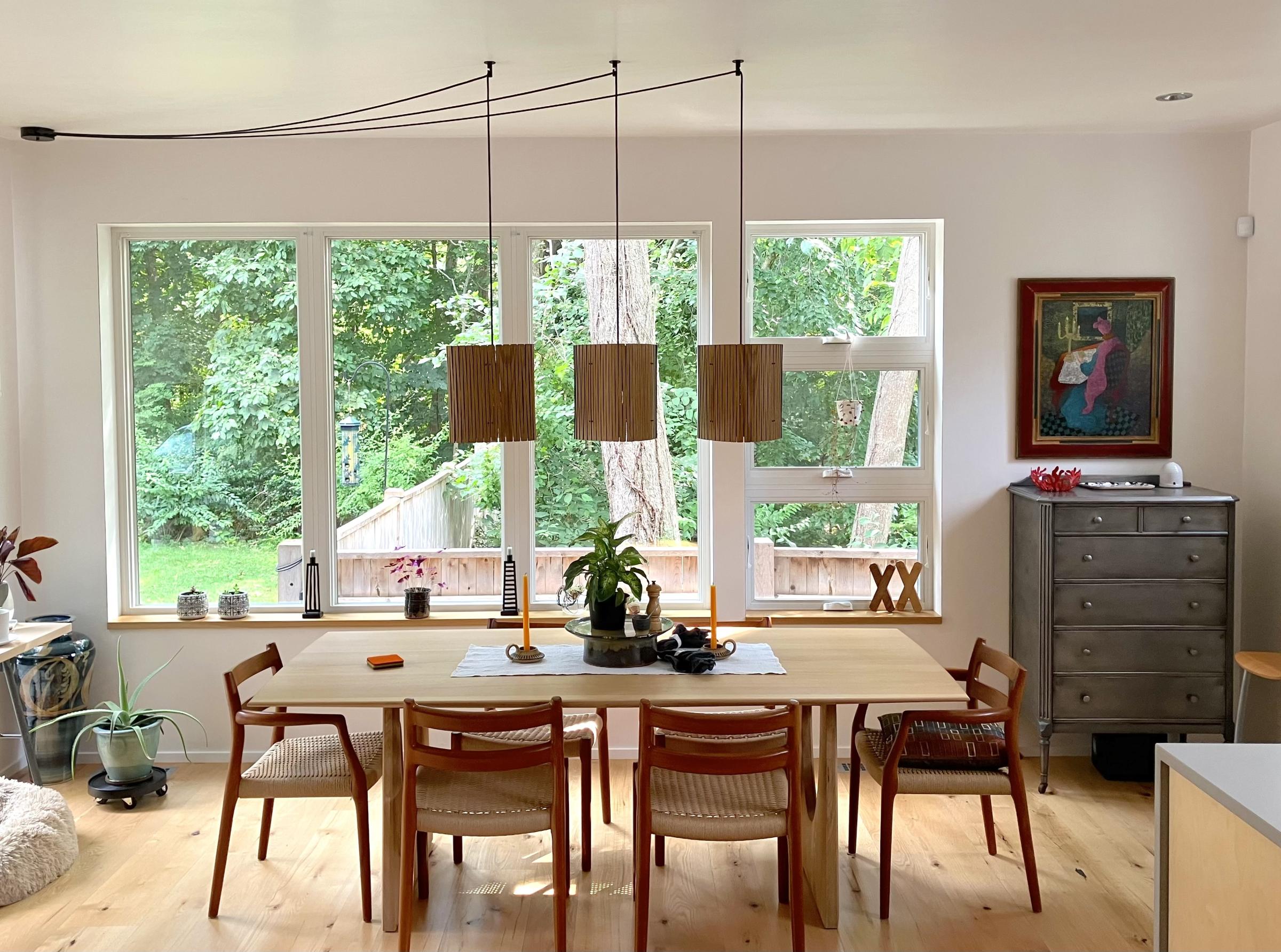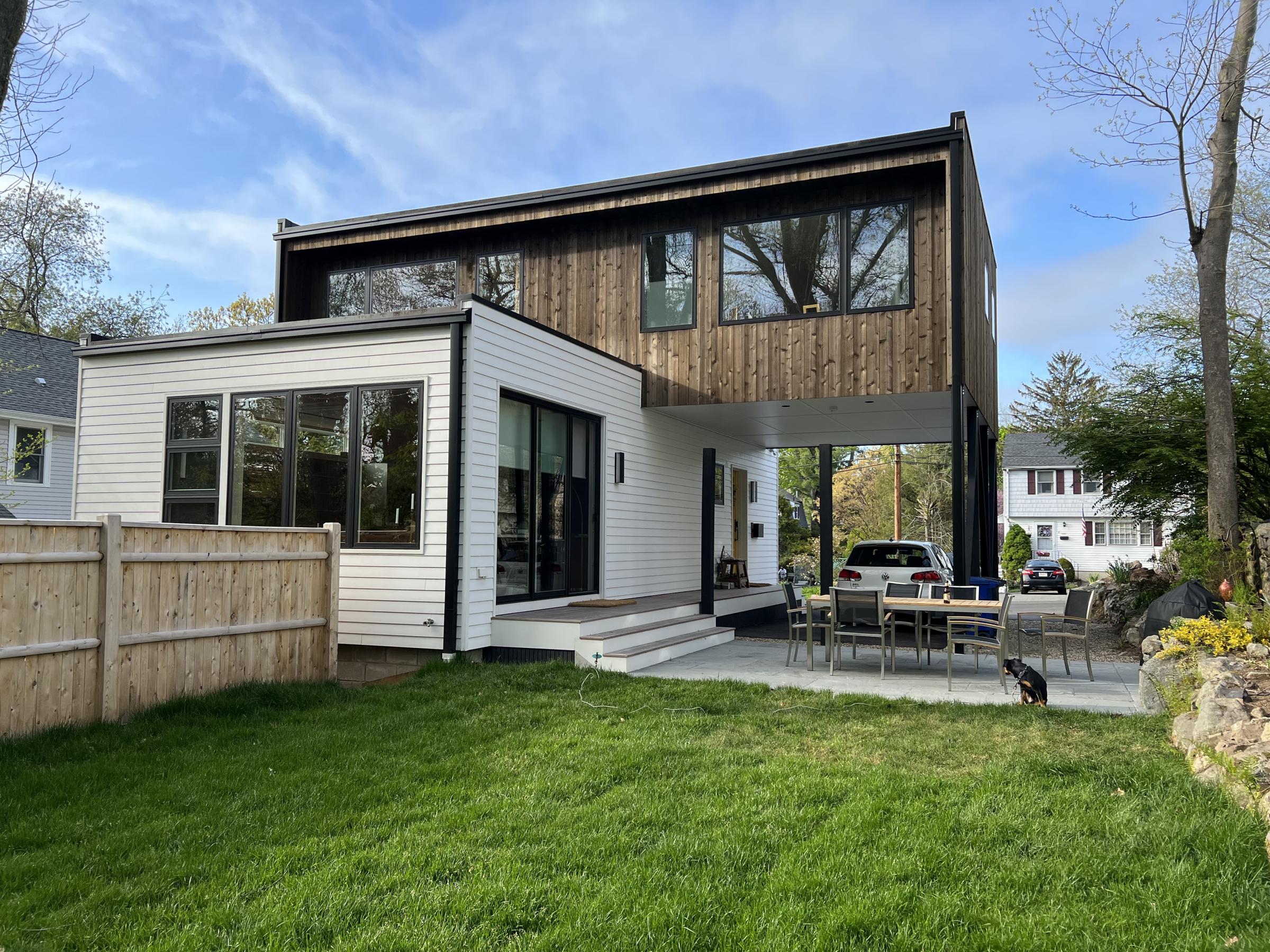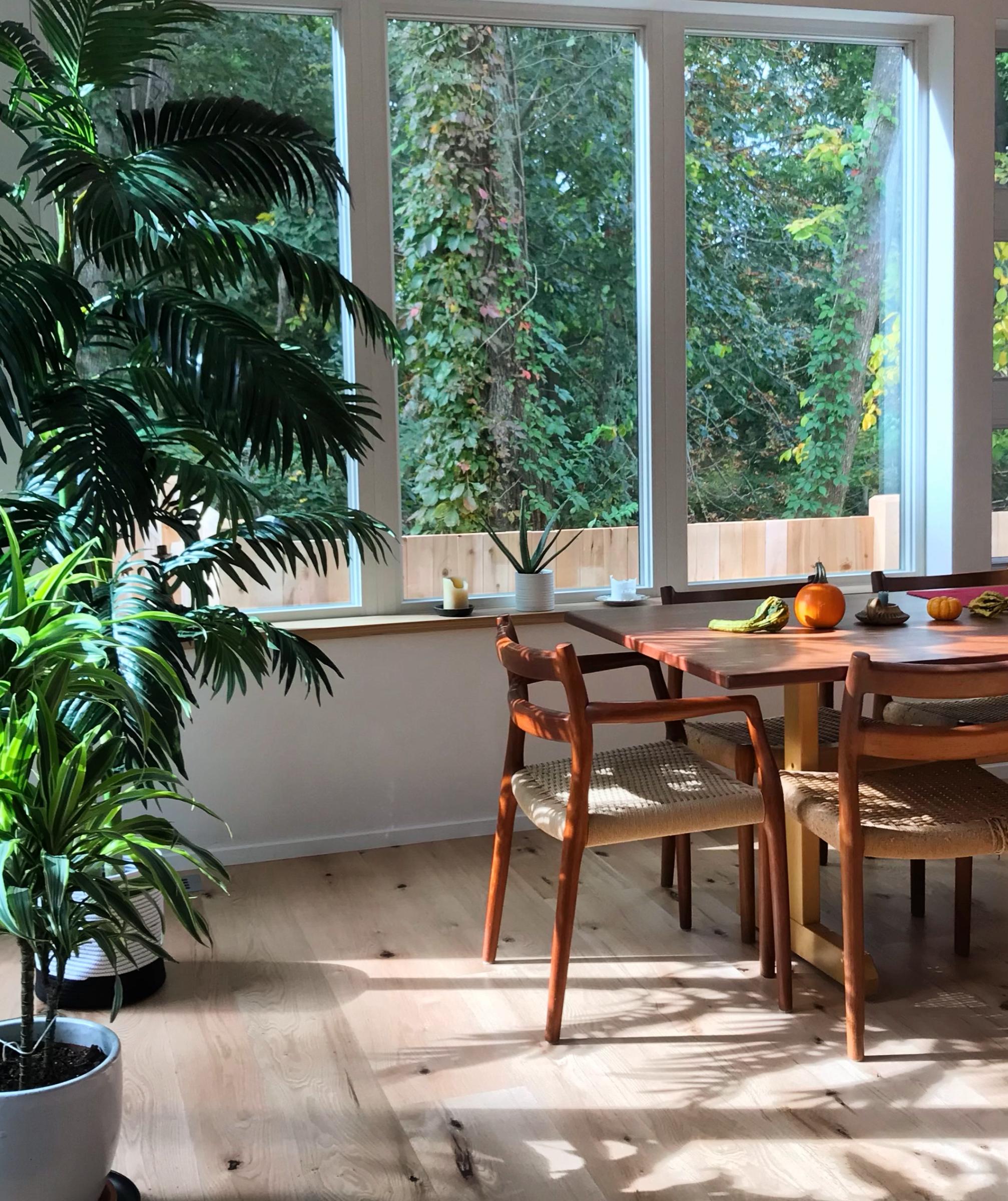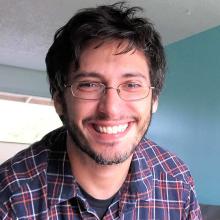COMPANY SPOTLIGHT: BRITTA DESIGN, INC.
BuildingEnergy Access is a NESEA initiative to support the work of WMBEs (women and minority-owned business enterprises) by connecting them with the resources of the NESEA community. Each month, we'll introduce a participating company to the wider NESEA community through a spotlight interview.
We recently sat down with Britta McCarthy of Britta Design, a Lexington, MA-based interior and architectural design firm that specializes in creating warm inviting homes that are energy efficient and sustainable. We discussed her work, running her business, and her impressions of the BuildingEnergy Access program so far...
Ian Reed: How many years have you been in business? What inspired you to start your business?
Britta McCarthy: I've been in the design business for thirty years. My father was a scientist, inventor, and entrepreneur, so being creative, resourceful, and having my own business came naturally. I have always loved art and design, and by the time I was in my teens, I knew I wanted to work on homes to improve their form and function, flow and feel.
IR: Can you share a quick version of your company description?
BM: We create homes for people who know they want something different than what they have, but don’t know how to get there, whether it’s due to spatial and functional challenges or a desire for stylistic change. Thoughtful space planning and creative use of materials, sourced with the environment and sustainability in mind, make our client’s homes healthy and happy while having staying power in enduring design and quality of construction and materials. Our vendors for materials, finishes, and furnishings are curated so that we can support local or small eco-conscious makers, craftspeople, and artisans. We also consider the property as a whole, including the transition spaces between outside and inside the house. That oft-forgotten zone is an important extension of our living space. We work closely with the project team on all aspects of a project to make the process fun and as smooth as possible for everyone.
IR: I was taken by the language you chose to describe your work: creating “a home” versus “designing a building.” It seems like there's a layer of meaning in choosing the word “home” to describe what you create.
BM: I'm a first-generation American Dane, with family in Denmark who were/are farmers and who manage with less and in smaller spaces that we’ve grown accustomed tohere in the US. I grew up being very aware of the conservation of materials and goods and using space efficiently and functionally, without ever sacrificing comfort, warmth, and coziness. I didn't realize how different my upbringing was until I studied architecture in Copenhagen and met American architecture students who related their experiences. It was interesting to have an opportunity to appreciate just how Danish I am in that context.
I'm a first-generation American Dane, with family in Denmark who were/are farmers and who manage with less and in smaller spaces that we’ve grown accustomed tohere in the US. I grew up being very aware of the conservation of materials and goods and using space efficiently and functionally, without ever sacrificing comfort, warmth, and coziness. I didn't realize how different my upbringing was until I studied architecture in Copenhagen and met American architecture students who related their experiences. It was interesting to have an opportunity to appreciate just how Danish I am in that context.
There's a misconception about “hygge” that it's a trend or about stuff. But it’s a way of being and doesn't have anything to do with a product. It could be just a conversation or moment among friends. Scandinavian design is warm, very practical, and sometimes minimalist, and it can be eclectic - e.g. a refurbished treasured antique together with a modern state-of-the-art fixture, in a cozy setting with soft light.
IR: It seems like you've managed to find a career that speaks not only to your aesthetic preferences but also to your identity as a person. I think that's terrific. Switching gears a little, could you describe a project that you worked on that you're particularly proud of?
 BM: It’s probably my own home. For some context, in the mid-2010s, when my business was growing and I was getting published, my then-husband took a job in California. It was difficult to leave the Boston area for so many reasons, professionally and personally. However, restarting in the L.A. area turned out to be a blessing in disguise. I met the most amazing people — talented designers, makers, and artisans — who shared their experiences in business, design, and life. When the marriage ended and I returned to Massachusetts, I was determined to bring back the LA vibe, the ease of being and living that I found out there, as well as my renewed strength: I infused that energy, reconnecting with builders, tradespeople, architects, vendors, and clients here (some whom I continued working with while out of state). It was a whole rebirth, if you will, and inspired me to create my home, a fossil-free retrofit of an existing house on a little lot. I like to call it my tree-house.
BM: It’s probably my own home. For some context, in the mid-2010s, when my business was growing and I was getting published, my then-husband took a job in California. It was difficult to leave the Boston area for so many reasons, professionally and personally. However, restarting in the L.A. area turned out to be a blessing in disguise. I met the most amazing people — talented designers, makers, and artisans — who shared their experiences in business, design, and life. When the marriage ended and I returned to Massachusetts, I was determined to bring back the LA vibe, the ease of being and living that I found out there, as well as my renewed strength: I infused that energy, reconnecting with builders, tradespeople, architects, vendors, and clients here (some whom I continued working with while out of state). It was a whole rebirth, if you will, and inspired me to create my home, a fossil-free retrofit of an existing house on a little lot. I like to call it my tree-house.
IR: Over the course of your career, the ideas and practices around sustainable building have changed dramatically. How have you adjusted your work as building practices have evolved?
BM: I've always had a perspective towards sustainability because of my upbringing, so the change I’ve experienced is more the increased interest and willingness of clients andbuilders to consider sustainable design. I think a lot of people are overwhelmed by the options and they are not sure what to do. A big part of my work is to educate and encourage people to think about the products and materials they put in their homes. This is especially important health-wise, as the tightness of houses has increased significantly. I am reaching out to more builders and architects to collaborate so we can start earlier in the thought process, thereby making new ideas more palatable, fluid, and consistent from the outset for our clients.
IR: Where do you see yourself taking the company in the future?
BM: On my journey back to Boston, I knew I needed to make changes to my business. I learned to delegate and let go of some things. It’s been an evolution, and I now work with a steady group of specialty subcontractors who provide support in bookkeeping, accounting, procurement, drafting, and rendering, as well as engineering and architecture. It has allowed me to focus more on the creative side and client relationships - as well as this new NESEA community! I’m partnering with someone from my cohort now on a project and it’s been a terrific experience. I’ve also recently hired an intern who will become my assistant designer and hopefully partner with me. We’ve worked together before; she was my client on two home renovation projects, and then she was an office assistant for me for a brief while. She has a great eye and we work well together, so this is a very exciting time for us both. Regardless of how long I’ve been at this, I see this as the prime of my career and life. I’ve got this wonderful space and I've got fantastic clients who keep coming back.
IR: I love to hear about successful collaborations coming out of the Cohort. Could you build on that a little and talk about your experience participating in BuildingEnergy Access? How did your relationship with NESEA develop and what you have taken from being a part of the program?
BM: Yes - it has been life-changing. It's been a huge unexpected gift.
I was looking to join NESEA about a year ago. I had reached out and I'd attended a webinar, where there were current and new NESEA Bottom Lines members talking about the program. And I thought, “You know, I need to expand my horizons.” The biggest thing I learned after my time in LA was that I've got to reach outside of my comfort zone, reach out, and become part of the community. In LA, the design community's very open; they share, they talk, and it's less so on the East Coast. So joining NESEA was my way of saying, “Hey, here's this community that is working together, sharing, and networking, and that’s what I need to be doing.”
I spoke with Flo (NESEA Executive Director Florence MacGregor) about joining and she said “Can you wait? We're writing a grant to try to get this new cohort funded that would be a good fit for you.” So once BuildingEnergy Access was announced, I applied and got accepted.
It has expanded my world. I've already started working with one of the architects in my cohort. I'm meeting people from different places and walks of life, and I'm feeling less alone. I know I've got a community I can reach out to with questions. There's been so much feedback and input, exchange of ideas, and vulnerability that it's allowed me to have greater clarity than I've had in a long time. I’m learning a lot. So I sit in front of you today feeling like, while there are good days and bad days in business, as we all have, I have a greater sense of what it is I'm doing and the path I'm on. So that's been the gift from NESEA and BuildingEnergy Bottom Lines.
IR: Terrific. Thank you for sitting down with us today, it was a pleasure.
BM: Thank you!
Our Mission
NESEA advances sustainability practices in the built environment by cultivating a cross-disciplinary community where practitioners are encouraged to share, collaborate and learn.





